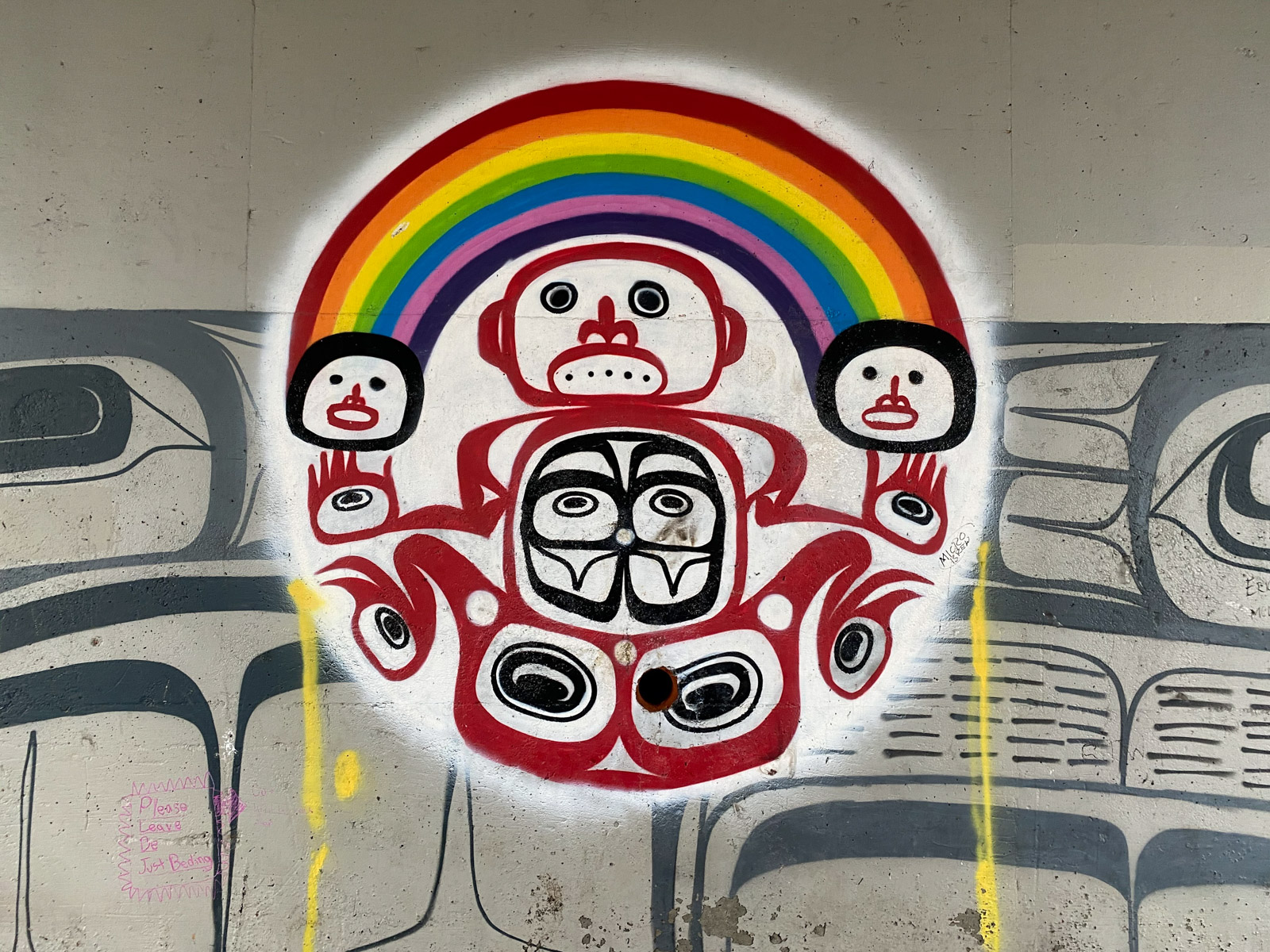“Graffiti is a lot more than what people think,” says Corey Bulpitt, a Vancouver-based Haida artist. “It’s not just throwing something up on a wall.”
Growing up in Vancouver in an adoptive family, Bulpitt knew little about his Haida heritage. As a teen, he took up a spray can as a fledgling graffiti artist before travelling to Haida Gwaii, at age 19, to apprentice with his uncle, master carver Christian White. His uncle not only taught him about his First Nations roots but showed him the skills he had developed through graffiti—design, composition, scaling—would transfer well to carving and other arts.
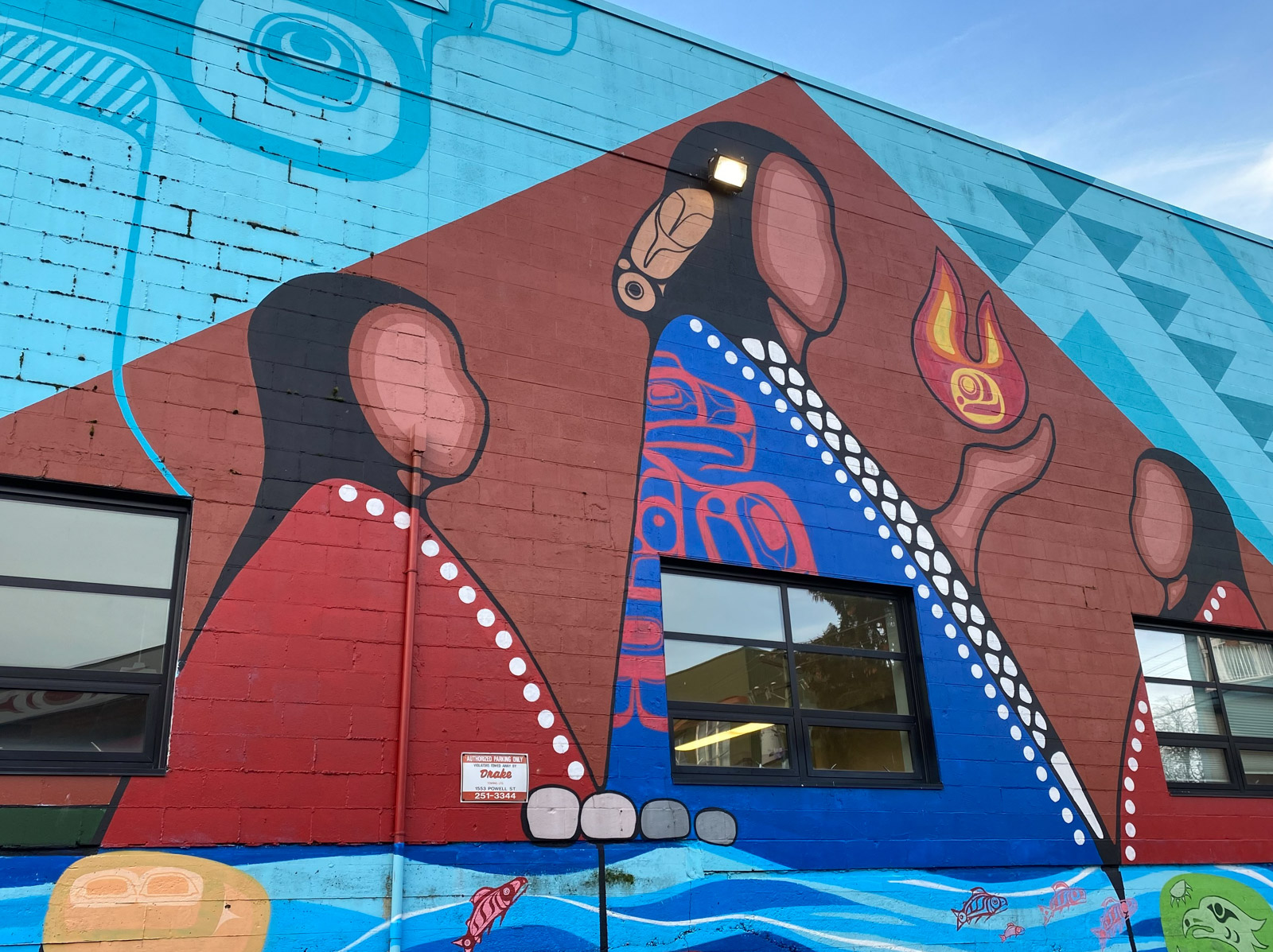
Past and Presence, a mural collaboration by artists Corey Bulpitt, Sharifah Marsden and Jerry Whitehead. Photo by Carolyn B. Heller.
Today, Bulpitt makes his living as a carver, but, like many local Indigenous artists, he has created art across the city’s walls, adding his unique voice to a variety of public spaces. From Stanley Park to the University of British Columbia, under bridges and through the lanes, Indigenous artists have crafted murals, sculptures, and other artworks for this city’s outdoor spaces.
And that’s good news for art lovers. As we continue to exercise caution this winter and add new outdoor activities to our repertoire, consider touring Vancouver’s wealth of public art by well known and up-and-coming Indigenous creators. Here are some good places to start.
Art Under the Bridge
After Bulpitt returned to Vancouver, one of his first major works was a collaborative mural project under the Granville Bridge. Working with Ojibway artist Larissa Healey in 2008, he created And the Raven Brought the Light, a mural still visible today (at West 4th Avenue at Anderson Street). Bulpitt and Healey painted a second under-the-bridge mural, The Storm, with a vivid rainbow that lights up the almost-underground space.
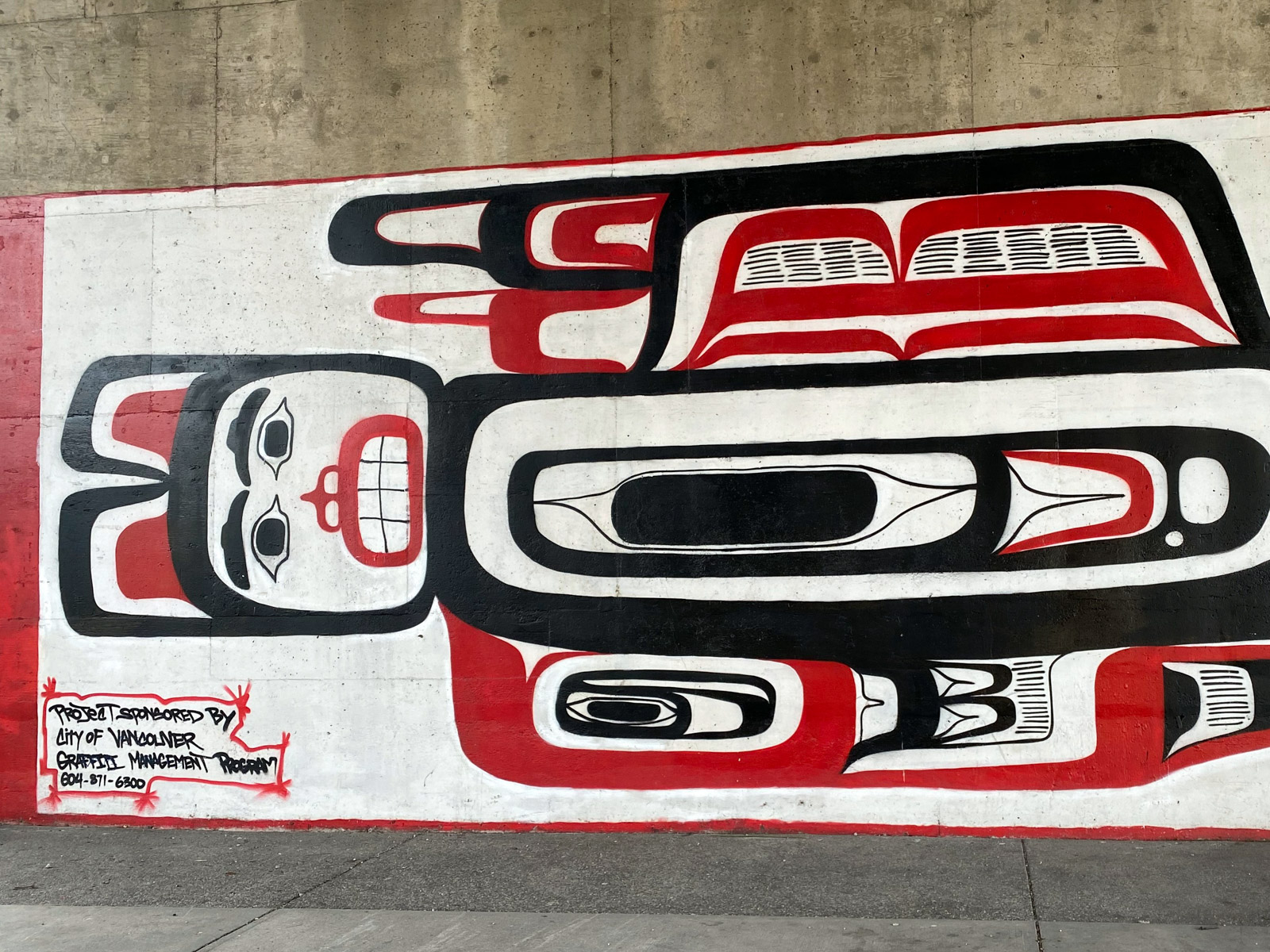
A section of And the Raven Brought the Light, by Corey Bulpitt and Larissa Healey. Photo by Carolyn B. Heller.
Behind the Raven mural, Squamish artist Wade Baker’s painting The Waters Are Rising tells the Coast Salish legend of the Great Flood. While Baker is known primarily as a carver and storyteller, he’s crafted other public art pieces as well, notably the stainless steel sculpture Salish North Star in Maple Leaf, commissioned for the 2010 Olympic Winter Games. Find this work on the waterfront in the Olympic Village (near 1 Athletes Way).
On Granville Island, another artwork decorates the bridge pillars near the Public Market. Musqueam artist Debra Sparrow designed Blanketing The City Part I, which soars more than 13 metres (44 feet) high, from the Coast Salish textile patterns she’s worked with as a weaver for more than 30 years.
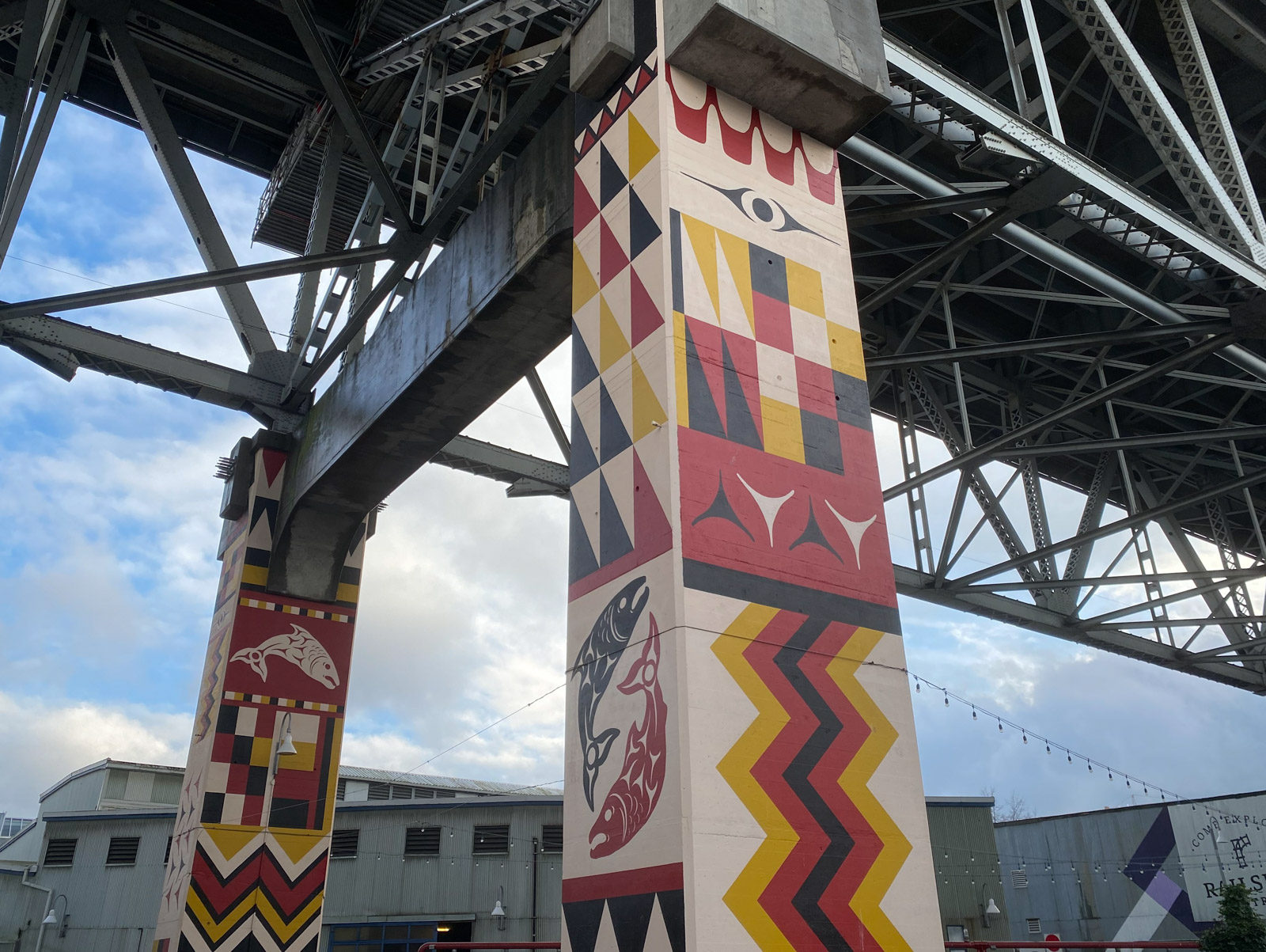
Blanketing The City Part I by Debra Sparrow. Photo by Carolyn B. Heller.
Several years ago, after seeing a story about the Vancouver Mural Festival in a local publication, Sparrow says she asked festival staff, “Where are the Musqueam’s murals?” Her question sparked the Blanketing the City project, painted during the 2018 Mural Fest.
Sparrow says her goal for this project was to “wrap the city of Vancouver in our patterns and in our beauty.” Many First Nations artistic traditions were forced underground or eliminated during the residential school era, she explains. Through weaving and other arts, she says, “we needed to take the strands of our identity and bring it back to this world.”
Blanket the City
Sparrow created a second piece in this series, Blanketing The City Part II, covering eight storeys of the former Biltmore Hotel (Kingsway at East 12th Avenue) in a rainbow of colours. As people race down the busy avenues near this Main Street-area mural, the artist hopes they’ll pause to appreciate the serenity of this massive work, which reflects “Vancouver’s closeness to the sky and the water.”
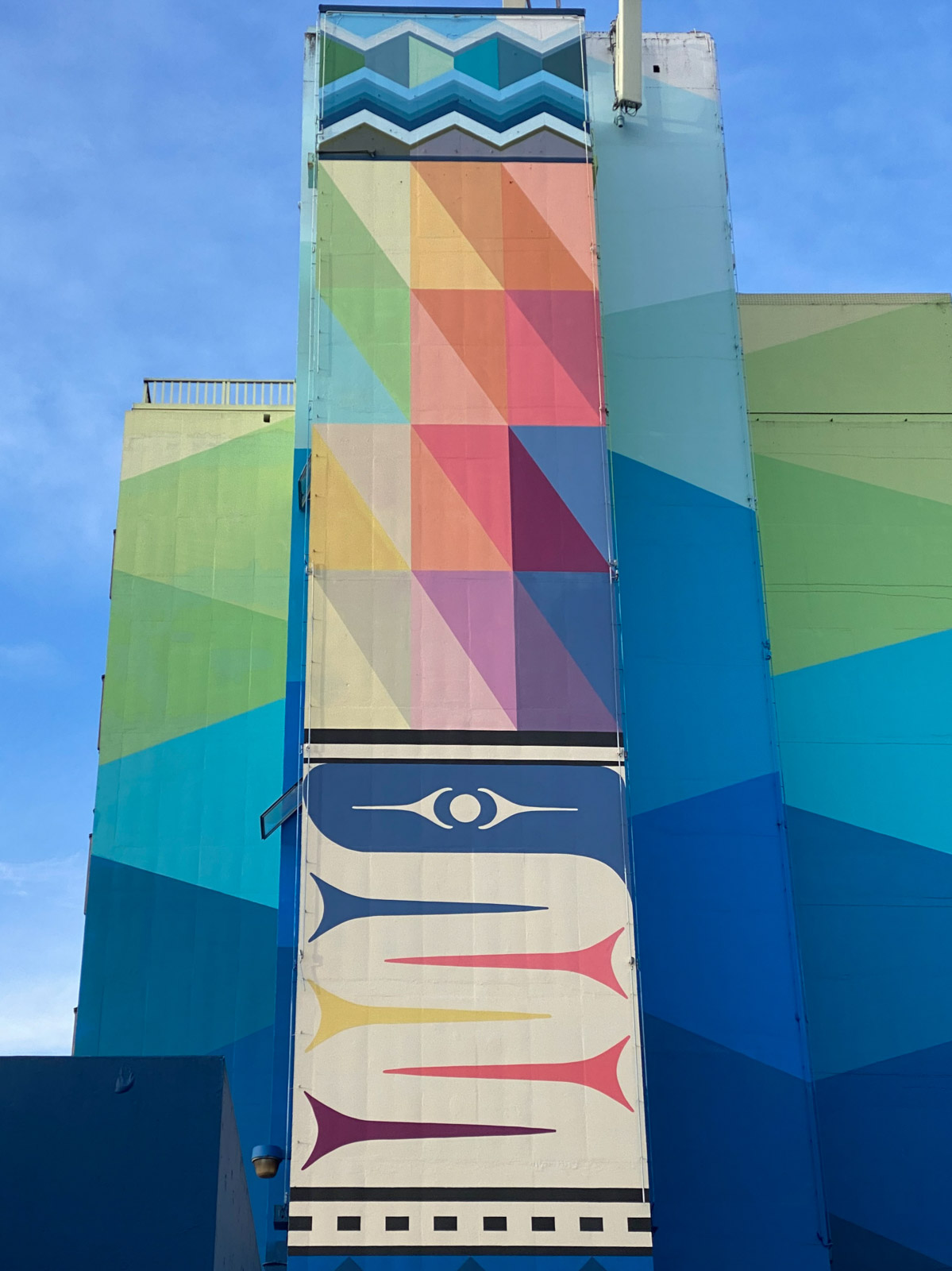
Blanketing The City Part II by Debra Sparrow. Photo by Carolyn B. Heller.
Thanks to the Vancouver Mural Fest, Main Street/Mount Pleasant is a particularly rich destination for outdoor art, with many works by Indigenous artists. Look for murals such as Scolder Dives for Berries by Carrielynn Victor of the Stó:lō Nation (138 East 4th Avenue, just west of Main), and Squamish artist Siobhan Joseph’s The Matriarch (on East 7th Avenue at 2301 Main Street).
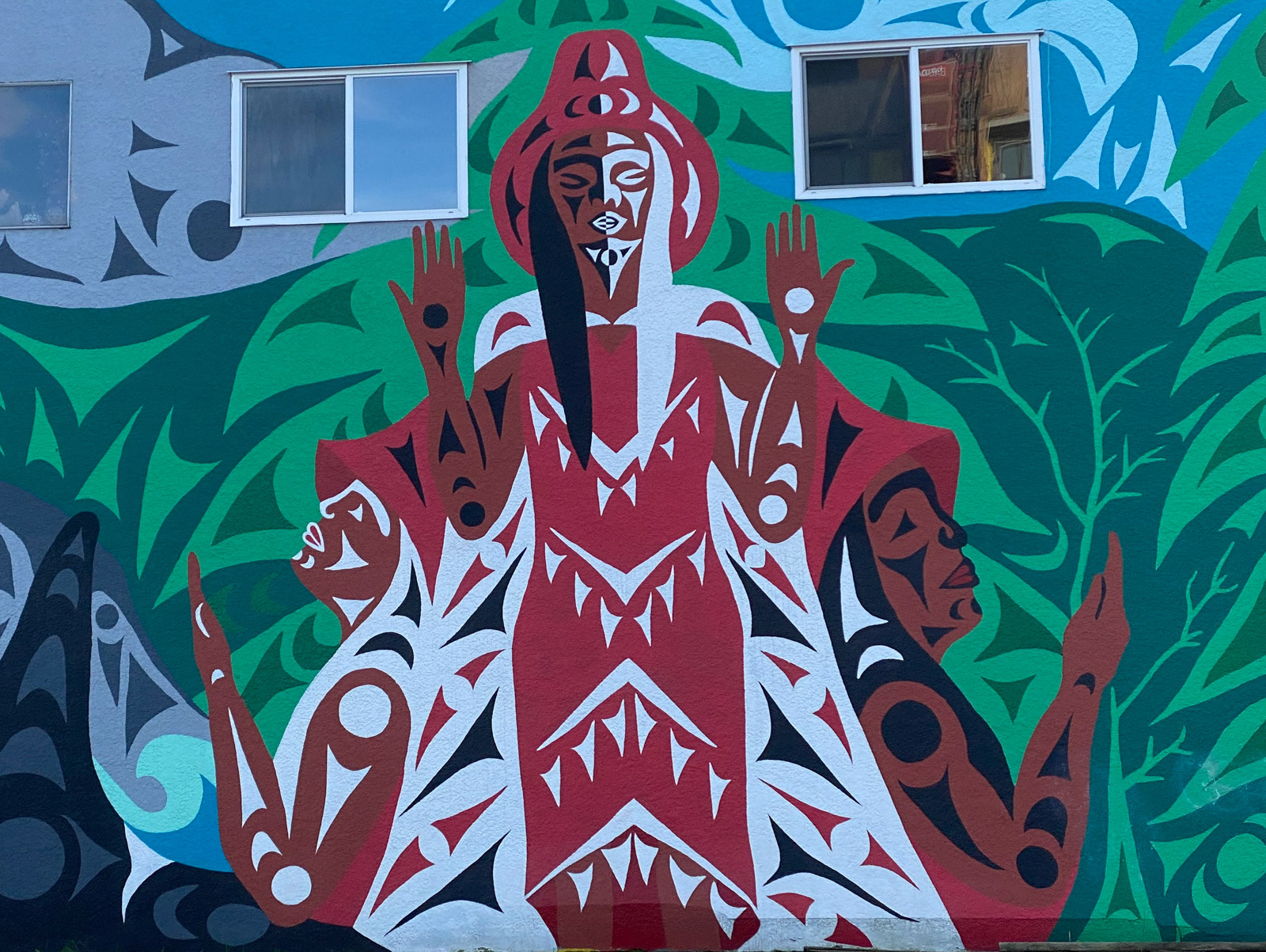
The Matriarch by Siobhan Joseph. Photo by Carolyn B. Heller.
Corey Bulpitt collaborated with Sharifah Marsden and Jerry Whitehead on a work in this area as well, Past and Presence, spanning an exterior wall of the Native Education College (240 East 5th Avenue).
From Welcome Poles to Spindle Whorls
Outdoor art isn’t only about murals. Like Bulpitt, Squamish artist Sinámkin–Jody Broomfield trained as a wood carver. He’s done a number of major commissions working in wood, from a welcome pole he carved for Simon Fraser University’s Burnaby campus to the Spirit House Post – Gathering of Nations outside the West Vancouver Community Centre.
Broomfield has since worked in stone, glass, metal, and other media. Using different materials “keeps the creative juices going,” he says. He’s done public art projects from North Vancouver to Coquitlam to Whistler, including We Hold Our Hands Up to You – Wa chet ḵ‘ayáchtntumi, a pair of bright red steel hands along the North Vancouver Spirit Trail, and the vibrant red Thunderbird, installed near the Fairmont Chateau Whistler Hotel.
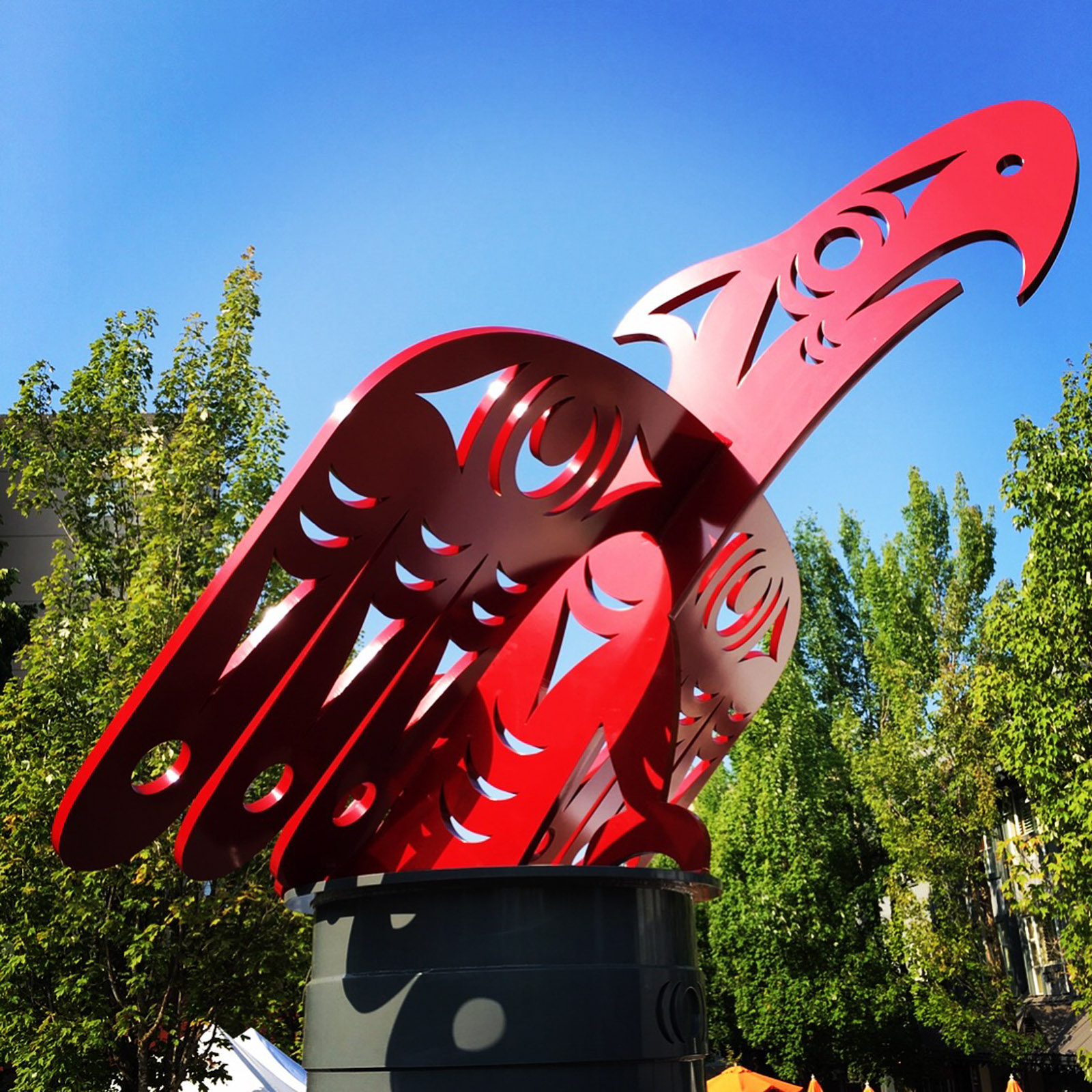
Thunderbird by Sinámkin–Jody Broomfield. Photo by Sinámkin–Jody Broomfield.
One of Broomfield’s most dramatic public art pieces, Salish Salmon Spindle Whorl, sits outside West Vancouver’s Park Royal mall. He describes this three-metre (10-foot) round stainless steel wheel as an homage to Coast Salish women weavers.
Stanley Park Public Art
The totem poles at Stanley Park’s Brockton Point may be among Vancouver’s most visited attractions, but this same corner of the park houses other works by contemporary Indigenous artists.
Luke Marston drew on his personal heritage to create Shore to Shore, a bronze sculpture in a mosaic tile base, which illustrates connections between Coast Salish people and Portuguese settlers. Two figures depicted in this sculpture, Joe Silvey who immigrated to B.C. from the Azores, and Kwatleemaat, a Shíshálh (Sechelt) Nation matriarch, were Marston’s great-great-grandparents.
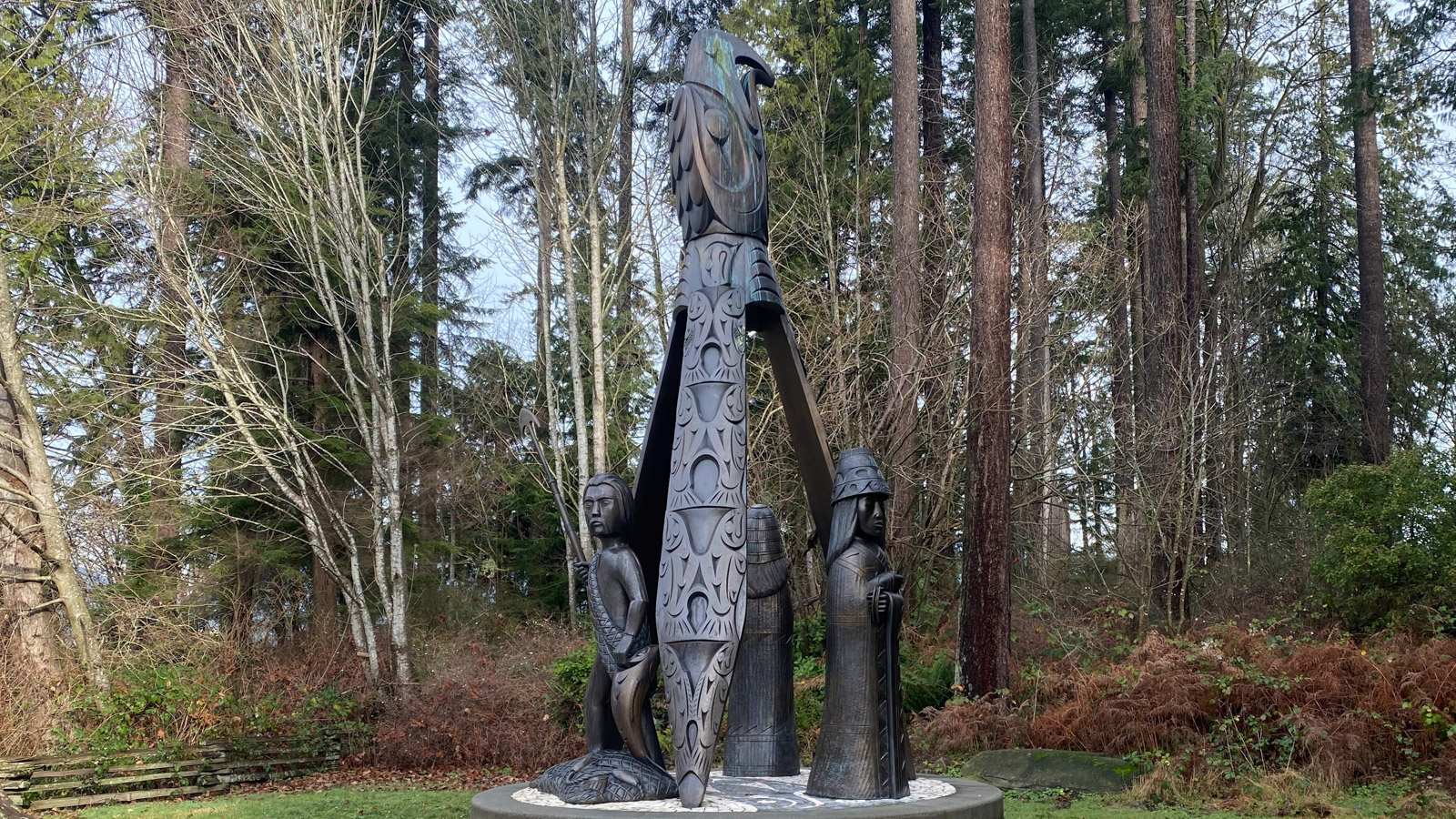
Shore to Shore by Luke Marston. Photo by Carolyn B. Heller.
Renowned Musqueam artist Susan Point, whose public art pieces can be found throughout the Lower Mainland and beyond, carved the red cedar gateways People Amongst the People. While the nearby totem poles represent northern First Nations, Point’s 2008 welcome portals were the first Coast Salish artworks installed in modern-day Stanley Park.
For more Indigenous art around the region, check out the City of Vancouver’s public art registry, the Vancouver Mural Festival, the North Vancouver public art directory, and this map of Indigenous art on the UBC campus. Read more stories on the Arts.

